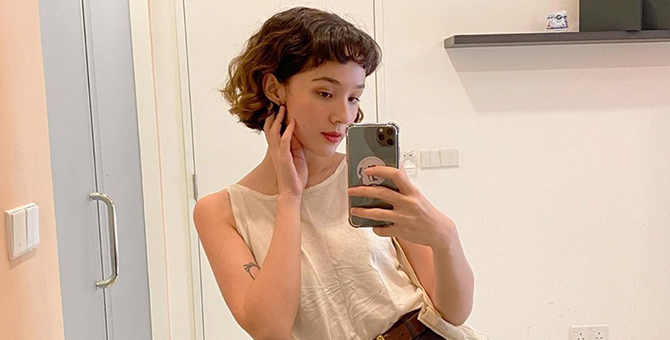It’s no secret that the fashion industry is one of the most polluting industries in the world, and fast fashion’s environmental impact, in particular, is significant. Thankfully, with ‘sustainability’ being one of the hottest buzzwords in fashion in recent years, there’s been a rise of conscious consumers, and with that, comes a new wave of influencers to follow.
If you’re looking to shop more sustainably and build a more ethical wardrobe, let content creator—and seasoned conscious shopper—Bay Doucet give you some tips to get you started.
Describe your style in three words.
Comfortable, ever-changing, relaxed.
View this post on Instagram
Tell us more about your fashion journey. Have you always been a conscious consumer?
Fashion for me has never really been about buying the latest and trendiest pieces—I’ve always been described as having a more ‘grandma’ or ‘aunty’ style, and I decided to just embrace that.
When I was 17, I started watching some YouTubers who were really vocal about sustainable and ethical fashion such as Kristen Leo and WearILive, this then led me to the documentary ‘The True Cost’ on Netflix. At that point I decided I no longer wanted to shop fast fashion.
What are your thoughts on the slow fashion scene in Malaysia?
I think in the city—in KL at least—people are starting to be more conscious about where they shop, so you do start to see a few sustainable stores coming up, and it’s definitely exciting! One of them is Shop Unplug, a concept store in Bangsar Village II that houses local and international sustainable brands.
Our culture has a lot of traditional crafts, like Batik, for instance, which are “slow fashion” by nature, and it’s interesting to see it being incorporated into the work of local brands like Changgih Designs and Fern Batik Collective.
View this post on Instagram
What do you think is the biggest challenge when it comes to dressing sustainably?
It’s important for me to highlight that shopping sustainably is a privilege. Sustainable brands are much, much more expensive than fast fashion brands, this is of course due to the fact that everyone down the production line is being paid and treated fairly, and the materials used are better for the environment.
Shopping secondhand or vintage is a more affordable option to dressing sustainably, however sizing and style options can sometimes be limited, and secondhand shopping often takes more time and effort to comb through the pieces and find what you want.
For this reason, I think shopping sustainably is a responsibility for those in positions of privilege, but not a necessity for everyone.
What’s your advice to those who’d like to start shopping responsibly or build a more ethical wardrobe?
Remember that it’s not an overnight change. Building a more ethical wardrobe starts with treating the clothes you already have with love and care, re-wearing old pieces, donating the ones you don’t wear as often anymore, and doing clothing swaps with your friends. An ethical wardrobe is all about buying less and creating less waste.
Another tip when shopping is to avoid trendy pieces and purchase clothing you know you can wear over and over again. Sustainable brands tend to be more expensive, which is why you should be buying timeless pieces that you can wear often.
View this post on Instagram
What are some of your favourite local fashion brands at the moment?
Two local sustainable brands I love are @lisatelier.co and @thelittleclothingshop, and two great secondhand shops I love are @okgostore and @nabstalgia. @shopterrae is a new one that does sustainable activewear!
| SHARE THE STORY | |
| Explore More |




